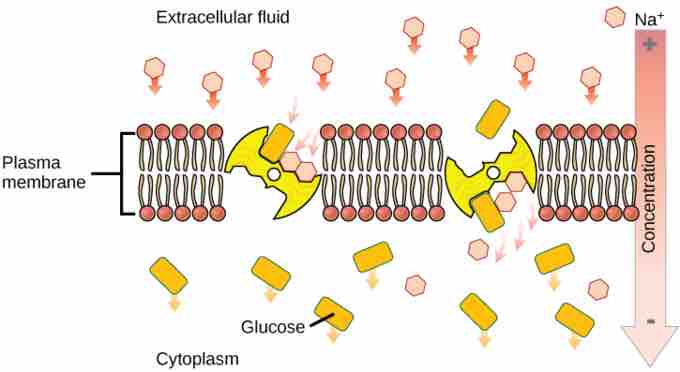Secondary Active Transport (Co-transport)
Unlike in primary active transport, in secondary active transport, ATP is not directly coupled to the molecule of interest. Instead, another molecule is moved up its concentration gradient, which generates an electrochemical gradient. The molecule of interest is then transported down the electrochemical gradient. While this process still consumes ATP to generate that gradient, the energy is not directly used to move the molecule across the membrane, hence it is known as secondary active transport. Both antiporters and symporters are used in secondary active transport. Co-transporters can be classified as symporters and antiporters depending on whether the substances move in the same or opposite directions across the cell membrane.
Secondary active transport brings sodium ions, and possibly other compounds, into the cell. As sodium ion concentrations build outside the plasma membrane because of the action of the primary active transport process, an electrochemical gradient is created. If a channel protein exists and is open, the sodium ions will be pulled through the membrane. This movement is used to transport other substances that can attach themselves to the transport protein through the membrane . Many amino acids, as well as glucose, enter a cell this way. This secondary process is also used to store high-energy hydrogen ions in the mitochondria of plant and animal cells for the production of ATP. The potential energy that accumulates in the stored hydrogen ions is translated into kinetic energy as the ions surge through the channel protein ATP synthase, and that energy is used to convert ADP into ATP.

Secondary Active Transport
An electrochemical gradient, created by primary active transport, can move other substances against their concentration gradients, a process called co-transport or secondary active transport.